Transcription of V I O R A NAL H Y B E S T Fourth Edition CERTI B O A R D ...
1 2012 Behavior Analyst Certification Board, Inc. (BACB ), all rights reserved. Stefanie Koehler Designs_BACB_113011 BACB LOGO VECTOR MASTER FILECONTACT :: Stefanie Koehler 604-563-9412 Vancouver, BC, CanadaBEHAVIORANALYSTCERTIFICATIONBOARD BEHAVIORANALYSTCERTIFICATIONBOARD Introduction1 The BACB Fourth Edition Task List is organized in three major sections: The first section, Basic Behavior-Analytic Skills, covers tasks that a practicing behavior analyst will perform with some, but probably not all, clients. These tasks represent basic, commonly used skills and procedures.
2 The second section, Client-Centered Responsibilities, includes tasks related to working with all clients and they should apply in most applied situations. The third section, Foundational Knowledge, covers concepts that should have been mastered prior to entering practice as a behavior analyst. The topics listed in this section are not tasks that a practitioner would perform; instead, they are basic concepts that must be understood in order to perform the tasks included in the first two sections. This list is provided mainly as a resource for instructors and a study tool for candidates.
3 Candidates for the BCBA and BCaBA credentials should have a thorough understanding of these of the questions on the BCBA and BCaBA examinations are linked to the tasks listed under Basic Behavior-Analytic Skills and Client-Centered Responsibilities. Each examination form will contain one or two questions evaluating candidate knowledge of every task from these two sections. The topics listed in the Foundational Knowledge section will not be directly assessed with a specific number of questions; however, they may be indirectly assessed through questions about related tasks .
4 For example, a test question about the Client-Centered Responsibility task J-11 Program for stimulus and response generalization might cover Foundational Knowledge item 36 Define and provide examples of response generalization or item 37 Define and provide examples of stimulus generalization. IIIIIIBEHAVIOR ANALYST CERTIFICATION BOARDF ourth EditionTask List2 Ethics and Professional Conduct are subsumed within each section of the task list. The BACB Professional and Ethical Compliance Code for Behavior Analysts (Compliance Code) is an essential companion document to the task list.
5 BACB certificants must practice in compliance with, and should structure their practices in accordance with, the Compliance Code. Candidates are expected to have a complete understanding of this document, including, but not limited to, the importance of ethical conduct as it relates to professional practice of the tasks identified in the Fourth Edition Task List. As a result, questions addressing ethical issues related to specific tasks will appear on the Koehler Designs_BACB_113011 BACB LOGO VECTOR MASTER FILECONTACT :: Stefanie Koehler 604-563-9412 Vancouver, BC, CanadaBEHAVIORANALYSTCERTIFICATIONBOARD BEHAVIOR ANALYSTCERTIFICATIONBOARD 2A.
6 MeasurementA-01 Measure frequency ( , count).A-02 Measure rate ( , count per unit time).A-03 Measure interresponse time (IRT).A-06 Measure percent of trials to and interpret interobserver the accuracy and reliability of measurement , plot, and interpret data using equal-interval , plot, and interpret data using a cumulative record to display and implement continuous measurement procedures ( , event recording).A-13 Design and implement discontinuous measurement procedures ( , partial & whole interval, momentary time sampling).A-14 Design and implement choice Experimental DesignB-01 Use the dimensions of applied behavior analysis (Baer, Wolf, & Risley, 1968) to evaluate whether interventions are behavior analytic in and interpret articles from the behavior-analytic arrange independent variables to demonstrate their effects on dependent withdrawal/reversal alternating treatments ( , multielement) changing criterion multiple baseline multiple probe combinations of design I.
7 Basic Behavior-Analytic SkillsStefanie Koehler Designs_BACB_113011 BACB LOGO VECTOR MASTER FILE CONTACT :: Stefanie Koehler 604-563-9412 Vancouver, BC, CanadaBEHAVIOR ANALYSTCERTIFICATION BOARD BEHAVIOR ANALYSTCERTIFICATION BOARD 3B-10 Conduct a component analysis to determine the effective components of an intervention a parametric analysis to determine the effective values of an independent Behavior-Change ConsiderationsC-01 State and plan for the possible unwanted effects of and plan for the possible unwanted effects of and plan for the possible unwanted effects of Fundamental Elements of Behavior ChangeD-01 Use positive and negative appropriate parameters and schedules of prompts and
8 Prompt modeling and imitation task discrete-trial and free-operant the verbal operants as a basis for language echoic mand tact intraverbal listener positive and negative appropriate parameters and schedules of combinations of reinforcement with punishment and Koehler Designs_BACB_113011 BACB LOGO VECTOR MASTER FILECONTACT :: Stefanie Koehler 604-563-9412 Vancouver, BC, CanadaBEHAVIORANALYSTCERTIFICATIONBOARD BEHAVIOR ANALYSTCERTIFICATIONBOARD 4D-20 Use response-independent (time-based) schedules of reinforcement ( , noncontingent reinforcement).
9 D-21 Use differential reinforcement ( , DRO, DRA, DRI, DRL, DRH).E. Specific Behavior-Change ProceduresE-01 Use interventions based on manipulation of antecedents, such as motivating operations and discriminative discrimination training instructions and contingency contracting ( , behavioral contracts).E-05 Use independent, interdependent, and dependent group stimulus equivalence for behavioral contrast the matching law and recognize factors influencing high-probability request the Premack pairing procedures to establish new conditioned reinforcers and errorless learning matching-to-sample Behavior-Change SystemsF-01 Use self-management token economies and other conditioned reinforcement Direct precision personalized systems of instruction (PSI).
10 F-06 Use incidental functional communication augmentative communication Koehler Designs_BACB_113011 BACB LOGO VECTOR MASTER FILECONTACT :: Stefanie Koehler 604-563-9412 Vancouver, BC, CanadaBEHAVIORANALYSTCERTIFICATIONBOARD BEHAVIOR ANALYSTCERTIFICATIONBOARD 5 Section II: Client-Centered ResponsibilitiesG. Identification of the ProblemG-01 Review records and available data at the outset of the biological/medical variables that may be affecting the a preliminary assessment of the client in order to identify the referral behavioral concepts using nontechnical and explain behavior, including private events, in behavior-analytic (non-mentalistic)
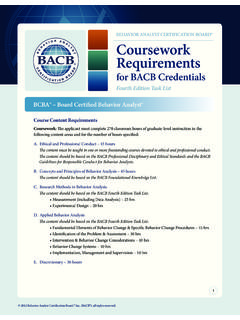
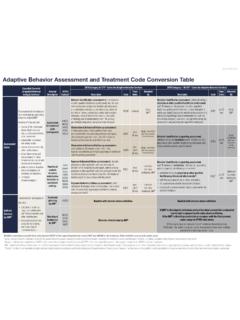
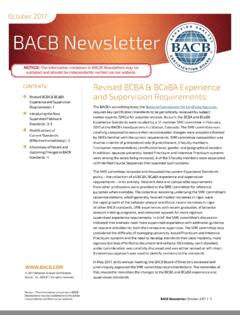
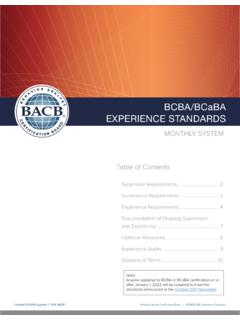
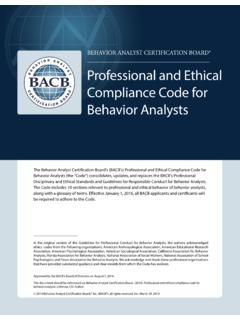
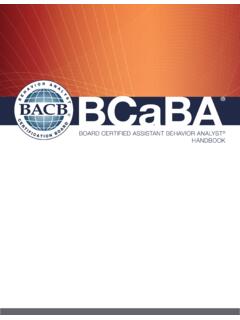
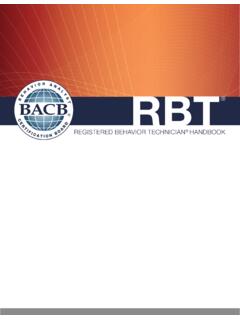
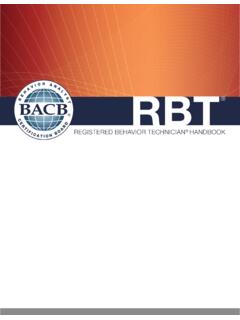
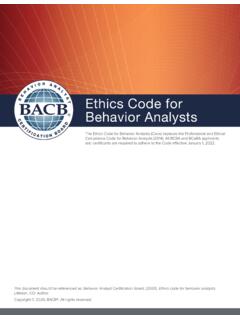
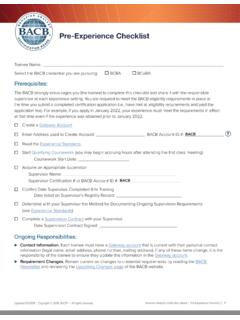





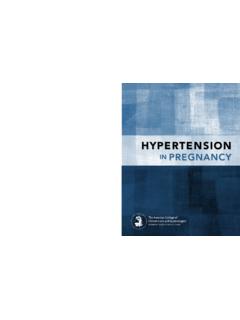

![ABSTRACT arXiv:1812.00332v2 [cs.LG] 23 Feb 2019](/cache/preview/5/1/9/1/c/0/8/a/thumb-5191c08a2a275c03358af0d4ca0febaf.jpg)
